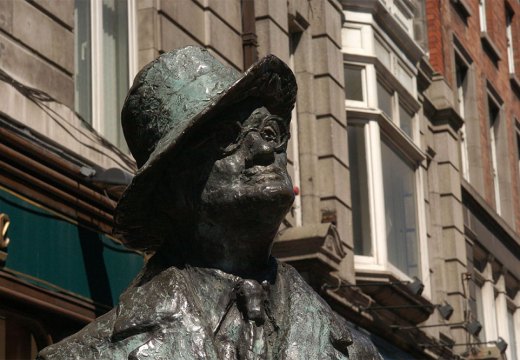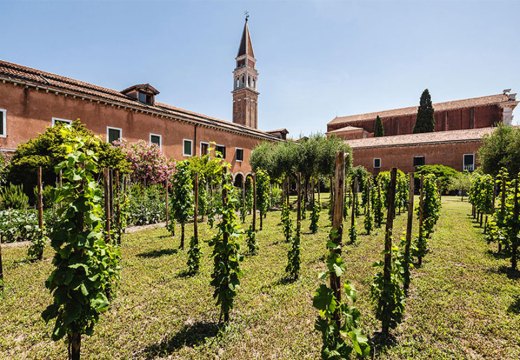From the April 2023 issue of Apollo. Preview and subscribe here.
‘White wine is like electricity. Red wine looks and tastes like liquefied beefsteak,’ James Joyce once declared. A sketch by the English painter Frank Budgen of the two men drinking wine in Zurich, where both spent the First World War, shows precisely the kind of convivial setting in which such a pronouncement might be made. The wine in the carafe on the table between them may have been a Fendant de Sion, Joyce’s favourite Swiss wine – and the writer’s fanaticism on this subject cannot be underestimated. Fendant, made of the indigenous Chasselas grape, is very dry, with traces of mineral, smoke and gunflint on the nose and a long, bitter finish. Joyce nicknamed the wine ‘the urine of the Archduchess’ after its pale amber colour.
Joyce wrote a substantial part of Ulysses in Zurich – and the city left a mark on him, for he returned often throughout the rest of his life. It was in Zurich that Joyce died in 1941. On these later visits, he frequented the Kronenhalle, a restaurant and bar in an elegant Biedermeier-era building on Ramistrasse 4, opposite the opera house. He was not the only artist among the restaurant’s patrons. For Picasso, the Kronenhalle was ‘a cultural institution’; Andy Warhol said he felt ‘inspired and rejuvenated’ after every visit. Coco Chanel, Marc Chagall, Federico Fellini and Yves Saint Laurent all visited every time they were in Zurich; their names are among many in a bulging guest book. It has come to stand as an exemplar of Swiss taste, both artistic and culinary. This extends, of course, to wine.
The Kronenhalle was established by Gottlieb and Hulda Zumsteg in 1924, on the site of a derelict hotel. Hulda was the driving force in creating an establishment that balanced high-class cooking with a bohemian atmosphere. One story has it that Hulda would serve a stew made from leftovers to lure in impoverished local art students – in exchange for paintings to hang on the walls.
In 1958, Gottlieb died and Hulda asked her son Gustav to join her in managing the restaurant. Gustav Zumsteg had established his name and fortune with the Abraham Silk Company, which provided fabrics to couture houses. He was an aesthete, well-regarded both in artistic circles and by the fashion industry. He was also a serious art collector, owning works by Braque, Matisse, Bonnard, Soutine and Miró. He hung the Kronenhalle with pieces from his own collection, as though to suggest to diners that he was inviting them into his home for supper.
In 1964, Gustav took over the adjacent property, intending, much to the chagrin of Frau Hulda, to build a bar. He commissioned the Swiss architect Robert Haussmann to design the space, drawing on the example of Adolf Loos’ American Bar in Vienna. Haussmann decked it out in materials of exquisite quality. The walls, a rich, dark green, are half covered in glistening teak panelling; the sofas and chairs are polished green leather. The light fixtures, with their exaggerated brass bases, come from the workshop of Diego Giacometti – as does the top of the bar, fashioned from gleaming marble.
Works by Miró, Chagall and others from Zumsteg’s collection adorn the bar. A Picasso drawing of a head from 1972 in the corner of the bar was Fellini’s favourite piece; the director always sat at the nearest table to sip his wine. There is also a work by Robert Rauschenberg, made when the artist visited and lived in Zurich as part of his ROCI (Rauschenberg Overseas Cultural Initiative) exchange in the 1980s. Perhaps it is not surprising that this work, a green floral pattern printed on silkscreen, would appeal to Zumsteg, the owner of a silk company.
The Kronenhalle is, in short, the perfect place to enjoy Swiss wines. Except to connoisseurs, these remain something of a secret beyond Switzerland – though the country’s viticulture dates to around 800 BC. Today, the country is home to 252 grape varieties. Across six regions, just 1,500 Swiss producers cultivate more than 15,000 hectares. With most indigenous grapes threatened by extinction, Swiss vineyards have been awarded UNESCO-protected status.
The mountainous landscape and the resultant microclimates create idiosyncratic wines. Yet, with typical Swiss precision, crossing and grafting processes have been perfected. This coupled, with the appellation regulation, means that both the quality and volumes can be strictly controlled. Grapes such as Chasselas, Petite Arvine, Garanoir, Humagne Rouge, Cornalin, and Pinot Noir do particularly well in this cool, mountainous terrain. The Swiss drink almost every bottle they produce, with less than two per cent exported. Labour costs are high, and the difficulty of harvesting the steep slopes manually means that the Alpine country only produces one million hectolitres a year (compared to 50 million from Italy).
This makes Swiss wine a luxury that is mostly enjoyed within the country’s borders. But, like the Kronenhalle, these wines have achieved a devoted following. In 1919, when Joyce left Zurich for Trieste, he could no longer find his beloved libation. He complained to Bugden in a letter: ‘Not a flat to be had. Prices very high….No wine here like the archduchess….And as for Ulysses – it is like me – on the rocks.’
From the April 2023 issue of Apollo. Preview and subscribe here.
Unlimited access from just $16 every 3 months
Subscribe to get unlimited and exclusive access to the top art stories, interviews and exhibition reviews.














![Masterpiece [Re]discovery 2022. Photo: Ben Fisher Photography, courtesy of Masterpiece London](http://www.apollo-magazine.com/wp-content/uploads/2022/07/MPL2022_4263.jpg)
It’s time for the government of London to return to its rightful home